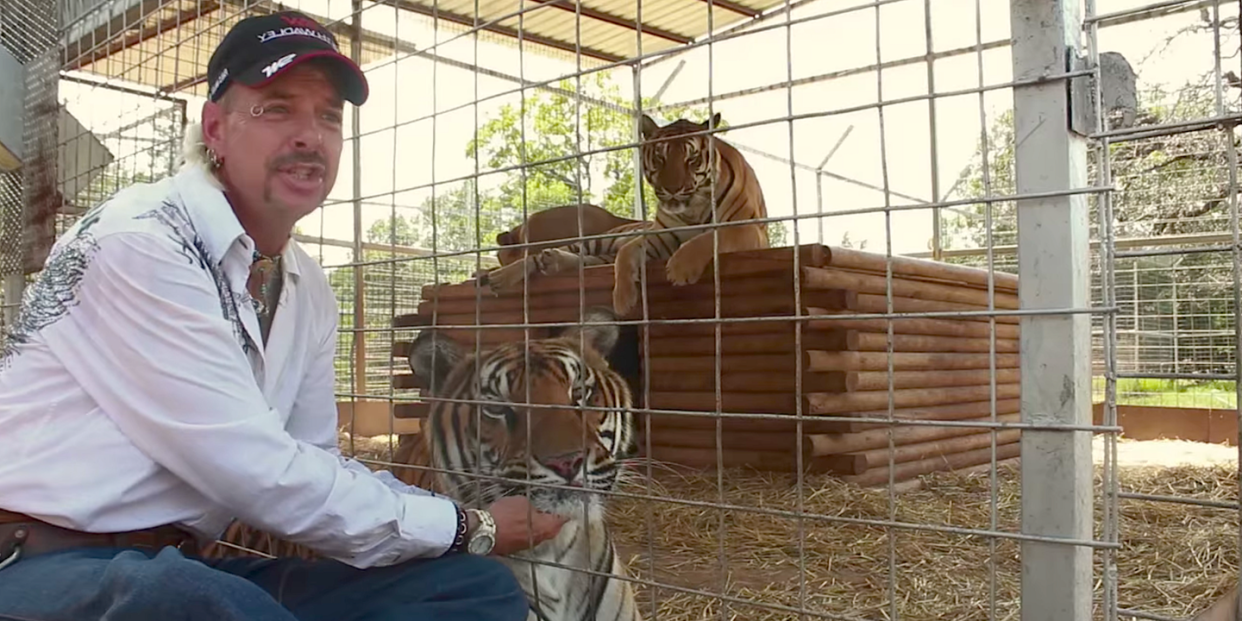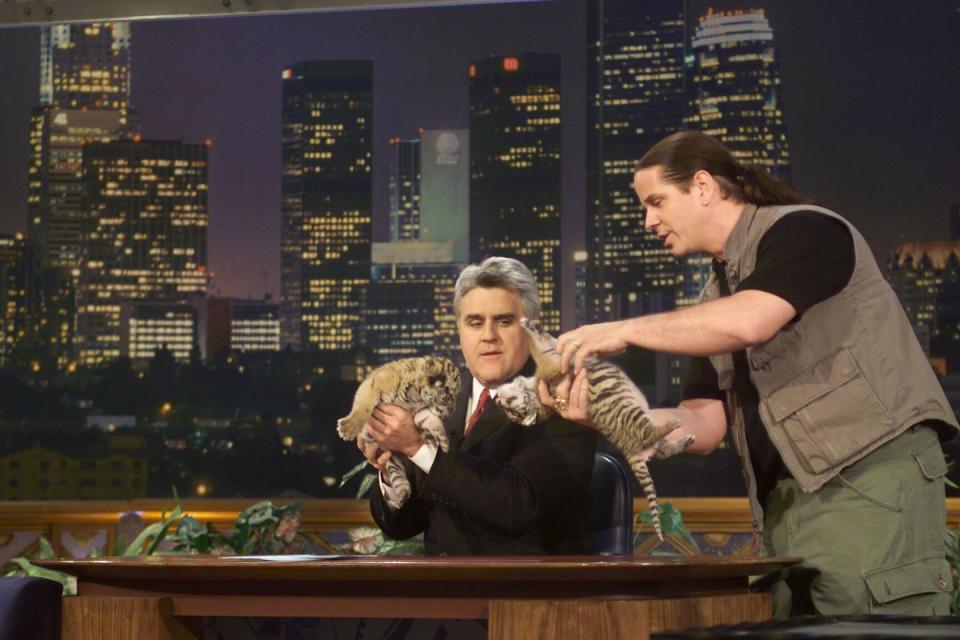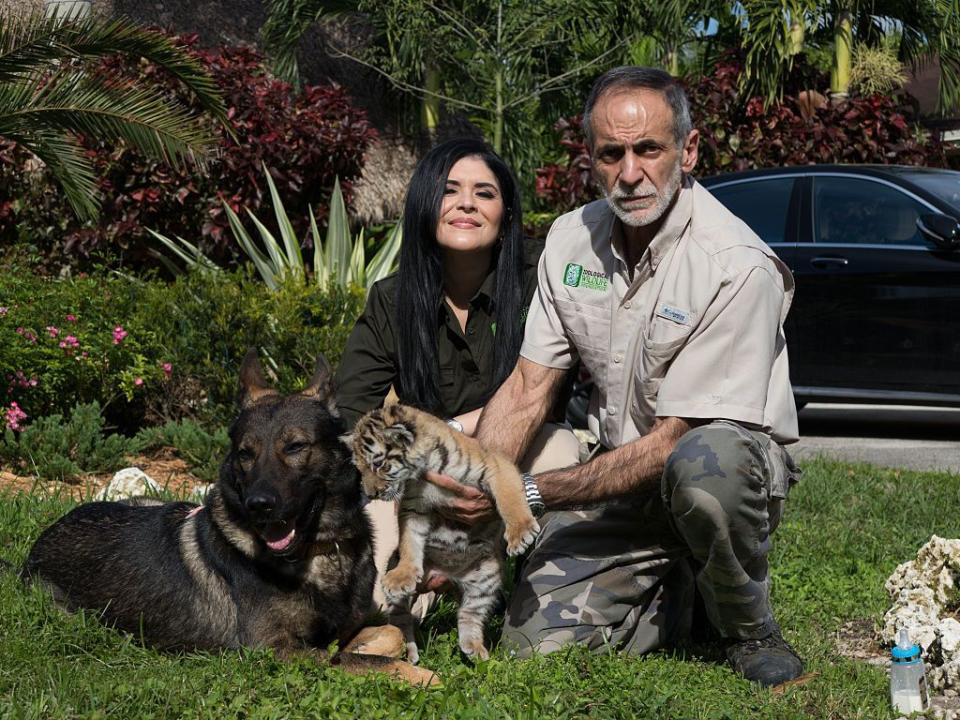How the 'Tiger King' Filmmakers Infiltrated the Seedy Underbelly of America's Sketchiest Zoos

Maybe you’ve never been to one of America’s hundreds roadside zoos, but almost all of us have encountered online evidence of the nation’s often lax exotic animal laws. Who hasn’t been drawn in by a cute viral video, one that seems harmless enough despite taking place in circumstances that seem unlikely to be permitted in a thoroughly above board zoo. Would dachshunds be allowed in a lion’s enclosure at the Bronx Zoo? Probably not, but you can’t spend more than a few hours online without stumbling upon similar videos. Netflix’s wildly gripping seven-part docuseries Tiger King: Murder, Mayhem, and Madness examines this world of big cat enthusiasts and roadside zoos that many only glimpse online, revealing the the ugly underbelly behind the viral videos and tiger cub photo ops.
Directors Eric Goode and Rebecca Chaiklin didn’t begin the project intending to document the bizarre big cat community, but people who deal in animals close to Goode’s heart: reptiles. The filmmaker is also a famed hotelier and turtle conservationist, and the pair’s original subject was an infamous reptile breeder and animal smuggler. Tiger King opens with the footage that reshaped the entire endeavor. While the crew documented a south Florida reptile purchase, the buyer invited them to see what he had in the back of his van: a snow leopard.
“We veered away from the reptile people,” says Goode, “into big cat world.”
Though the Tiger King becomes a tale of murder plots and prison sentences, when Chaiklin and Goode began the project five years ago, they planned simply to document a community heavy on eccentricity and morally questionable animal treatment. The two envisioned a series that was still “entertaining and fun” says Chaiklin, while examining the implications of holding creatures like tigers and lions in private ownership.
But a different storyline emerged by way of a feud between roadside zookeeper Joseph Maldonado-Passage, a self-described “gay, gun-toting cowboy with a mullet” best known as Joe Exotic, and Carole Baskin, a sanctuary owner determined to put him out of business. At his G.W. Zoo, Maldonado-Passage allowed customers to pet and play with cubs, which meant that he had to breed tigers in large numbers, condemning them, once they grew too large and dangerous to interact with the public, to tragic lives in small enclosures.
“They were completely obsessed with each other,” Chaiklin says. “We would go to film with Carole and [her husband] Howard, and all they would do is talk about Joe, literally just from morning to night. And then we’d go to film with Joe, and all he would do is talk about Carole.”

The rivalry became increasingly dark, culminating in a murder for hire saga that the series covers in its final episodes. But Tiger King’s broad scope offers viewers the chance to meet some of the other characters in the big cat community, including Mario Tabraue, owner of a private Miami zoo and former drug kingpin, who’s believed to be among the inspirations for the film Scarface. (Tabraue breezily describes an informant's dismemberment, and still comes off as being among the most normal people featured in the series.) The documentary also examines Bhagavan “Doc” Antle, owner of a Myrtle Beach zoo.
The Baskins emphasize the difference between their big cat sanctuary and breeding operations like Maldonado-Passage’s, but there isn’t a “tremendous difference in the day-to-day quality of life for the animals,” says Chaiklin. A major difference between Baskin and Maldonado-Passage, Chaiklin believes, is that, “Carole has the right messaging.”
Baskin has since disputed many of the claims made in Tiger King—specifically related to the disappearance of her late husband.

What is certain is that while concern for the welfare of animals might inspire Tiger King’s subjects, the people procuring these wild creatures have a complex relationship to their animals.
“They use these cats as a status symbol, to carve [themselves] out as being special,” says Goode.
“Their identities were completely tied up in their cats, whether it was being the ‘Mother Teresa of Cats,’ or the ‘Tiger King,’” Chaiklin adds.
And the public isn’t off the hook, either. Watching the series, I recognized a familiar face—that of an Instagram-famous chimpanzee who I’d often seen online, engaging in cute antics like driving a tiny toy car. That chimp is owned by Tabraue and the Instagram account asks its more than 650,000 Instagram followers for donations to the private zoo.
“Young chimps are cute, and cuddly, and charismatic,” says Goode. “But where is that chimp in 20 years?” Adult chimpanzees, like fully-grown tigers, are too dangerous to be kept as pets and live different lives from what the public sees on trips to roadside zoos or on social media. “The public just sees the facade,” says Goode. “What you don’t see is the behind-the-scenes.”
You Might Also Like

